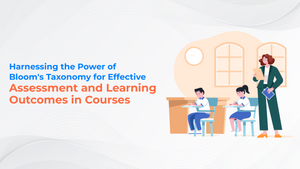Selling online courses is a great way to make an income while helping others learn and grow in their chosen field. Through digital platforms, you can create and market your learning materials to students worldwide. By leveraging the power of the internet, you can easily reach larger audiences and increase your profits.
Selling Online Courses
In the age of technology, digital education is taking the lead as one of the most accessible forms of learning. Online courses offer an opportunity to learn new skills, gain knowledge in a particular area, and find new career paths. For those looking to capitalize on this growing trend, selling online courses can be an effective way to do so.
Creating and selling online courses offers educational opportunities for learners while providing entrepreneurs with a platform to share their expertise and generate income. There are many considerations when it comes to creating successful online courses such as selecting a niche topic, developing lesson plans and materials, setting pricing models and more. With careful planning and research into market trends and buyer needs, entrepreneurs can create highly sought-after online courses that will make them stand out from competitors in the industry.
Targeting Your Audience
Having a clear understanding of your target audience is essential to effectively using Learning Management Systems (LMS). It helps you choose the best instructional materials, identify the most effective delivery methods, and create relevant tasks and assessments. Organizations looking to use an LMS should put together a profile of their target audience. This might include information such as age group, level of education, language preferences, cultural practices, or specific skills needed for the successful completion of certain courses.
Once this information has been collected it can be used to customize the learning experience in order to meet the needs and interests of learners. For example, curricula can be tailored to individual learning styles or educational materials can be presented in multiple languages. Additionally, providing different levels of difficulty within each course allows learners with varying levels of skill and knowledge access to the same content but at a pace, that’s suitable for them.
Developing Course Outline
Creating a course outline can be a daunting task, but it is an essential part of the teaching and learning process. A carefully crafted course outline offers structure, guidance, and direction to both instructors and their students. It should present the main concepts that will be covered, as well as provide expectations for both instructor and student.
When creating a course outline, there are several key components to consider. First and foremost is setting clear objectives for what the student should learn from taking the course. Additionally, it is important to develop measurable outcomes in order to ensure that all aspects of the class are being covered in an organized manner.
Furthermore, your course outline should include assessment criteria so that you can accurately evaluate how well students have achieved competency on each topic discussed in class. Finally, make sure that your syllabus includes any required materials or resources needed for the successful completion of the course.
Maximizing Visibility
Learning Management Systems (LMS) have become increasingly popular in the classroom. With the ability to create, store and share resources digitally, these systems provide a centralized hub for learning and collaboration. However, to make sure that all of your resources are seen by students, instructors must be mindful of maximizing visibility within the system.
The first step in increasing visibility is to prominently use features such as announcements or news sections throughout your course page. These will alert students that new materials have been posted and direct them toward recent changes in their course page. Additionally, using notifications within LMS can also ensure that students remain up-to-date on new resources as they become available. By setting clear expectations for when notifications should be used, instructors can ensure that their messages are seen by all intended recipients.
Automating the Process
Automation is quickly becoming the norm across industries and educational institutions are no exception. Automating processes within Learning Management Systems (LMS) can provide numerous benefits to a college or university, including increased efficiency, improved accuracy, and a decrease in data entry errors.
An automated system can streamline many of the tasks associated with an LMS such as student registration, grade tracking, and course management.
Eliminating manual procedures reduces the amount of time spent on mundane tasks and allows administrators to focus their attention on other areas that require more immediate attention such as student services or faculty relations. Automated systems also reduce the risk of human error by providing accurate information that is updated in real-time. This ensures that students have access to up-to-date information regarding their academic progress without having to wait for manual input from an administrator or instructor.
Assessing Performance
Assessing performance in Learning Management Systems (LMS) has become a critical learning experience component. By providing educators and administrators with the tools necessary to measure the progress of students, LMS can effectively identify areas where improvement is needed. The assessment process begins by defining objectives and setting goals that are relevant to learning outcomes.
This helps both instructors and learners understand what is expected from each lesson or course, as well as provides guidance on how to evaluate student performance against these objectives. Once goals have been identified, evaluation criteria should be established to ensure consistency in measuring results. Tests and quizzes are then created within the LMS for students to complete, which will give instructors an accurate representation of their abilities in relation to course objectives.
To Wrap Up
Creating and selling courses on BrainCert is a great opportunity for individuals, businesses, and organizations to share their knowledge and expertise with the world. With its user-friendly interface, robust features, and customizable options, BrainCert makes it easy to design, build, and deliver engaging and interactive online courses.
Whether you're an expert in a specific field, a teacher looking to expand your reach, or a business looking to train your employees, BrainCert is the perfect solution for creating and selling courses online. So, why wait? Sign up today and start sharing your knowledge with the world!










